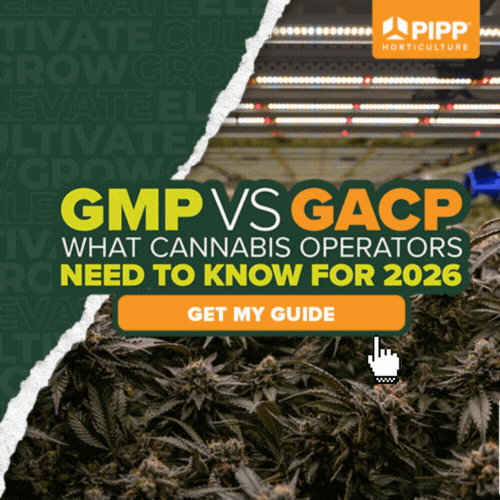
Just days before U.S. House lawmakers adopted an amendment to the 2024 Farm Bill that would close a THCA “loophole” related to seeds and cannabis flower marketed as hemp, the Drug Enforcement Administration (DEA) reasserted that there is no loophole to begin with.
Currently, the 2018 Farm Bill creates a distinction between cannabis and federally legal hemp by defining hemp as containing no more than 0.3% delta-9 THC on a dry-weight basis. While this 2018 definition includes any part of the plant—as well as seeds, derivatives, extracts, cannabinoids, isomers, acids, salts and salts of isomers—whether growing or not, it does not specifically mention tetrahydrocannabinolic acid (THCA).
“Scientists and growers know that cannabis and hemp are really just different varieties of the same plant, Cannabis sativa,” Dr. Andrea Small-Howard, president at GB Sciences Inc., wrote in a 2021 contributed article for Cannabis Business Times. “However, U.S. legislators have created two legally distinct market opportunities by defining hemp as cannabis or cannabis extracts with less than 0.3% delta-9 THC.”
While almost all cannabinoids in a cannabis or hemp plant are stored in their cannabinoid acid forms, such as THCA, cannabidiolic acid (CBDA) and cannabigerolic acid (CBGA), according to Small-Howard, “heat and light will remove the carboxylic acid group from the cannabinoid acid through a decarboxylation reaction.” When a person smokes or vapes raw cannabis flower, the nonintoxicating THCA turns into intoxicating THC through the decarboxylation process.
In some states, high-THCA cannabis flower products have been labeled as hemp and sold outside the licensed cannabis market under the perceived loophole that these products contain less than 0.3% delta-9 THC until the end user lights up.
But the DEA doesn’t interpret this definition through the same lens.
“In regards to THCA, Congress has directed that, when determining whether a substance constitutes hemp, the delta-9 THC concentration is to be tested ‘using post-decarboxylation or other similarly reliable methods,’” Terrence L. Boos, Ph.D., chief of the Drug and Chemical Evaluation Section of the DEA’s Diversion Control Division, wrote in a May 13 letter.
Specifically for hemp, the U.S. Department of Agriculture (USDA) requires hemp to be lab tested within a 30-day window before harvest time to determine whether it meets the 0.3% delta-9 THC threshold defined in the 2018 Farm Bill. This pre-harvest test often involves a gas chromatography method to heat a testing sample, or other similarly reliable methods, according to the USDA. In this testing method, when the THCA is converted to THC, the final delta-9 THC result is actually a total THC result, according the 2018 Farm Bill’s final rule.
Another common testing method is liquid chromatography, which does not involve a heat source and therefore the testing sample typically does not decarboxylate, according to the final rule. Therefore, the THCA and delta-9 THC is reported separately, but the total THC value must be calculated using the following formula: Total THC = (THCa×0.877) + THC. This total THC testing requirement for pre-harvested material helps ensure consistency across the U.S. Domestic Hemp Production Program.
“The ‘decarboxylation’ process converts delta-9 THCA to delta-9-THC. Thus, for the purposes of enforcing the hemp definition, the delta-9 THC level must account for any delta-9 THCA in a substance,” Boos wrote in the letter. “Accordingly, cannabis-derived THCA does not meet the definition of hemp under the CSA, because upon conversion for identification purposes as required by Congress, it is equivalent to delta-9 THC.”
Boos was responding to a letter from cannabis attorney Shane Pennington, partner at Porter Wright Morris & Arthur, who sought clarity on the federal control status of THCA under the Controlled Substances Act.
But this response by Boos is nothing new, according to international cannabis lawyer Rod Kight, owner of Kight Law Office. The response is almost verbatim what Boos wrote in a June 2023 letter about THCA, according to Kight.
New or not, Kight told Cannabis Business Times that Boos’ interpretation of THCA is only half correct. He reiterated that the total THC test requirement is for pre-harvest material only.
“The DEA is correct with respect to the pre-harvest test that the USDA and the [Farm] Bill require, but not with respect to just cannabis material out in the world; that’s solely delta-9 [THC],” he said. “It’s pretty clear. And even the statutes that [Boos] references are solely about cultivation.”
In other words, once a crop passes the lab test and is harvested, no additional tests are required under federal law. This means the only statutory metric under federal law for determining whether harvested cannabis material is lawful hemp or illegal cannabis is its delta-9 THC levels (not THCA or total THC), according to Kight.
Kight explained this position further in his “Kight on Cannabis” blog last week: “The DEA is incorrect with respect to harvested cannabis material. This is because the two statutes it cites in support of its position are the only two places in the Farm Bill that discuss ‘post-decarboxylation.’ They are both in the context of hemp ‘production,’ which is defined as cultivating hemp. Once the mandatory pre-harvest testing is completed, a hemp crop may be harvested if it passed the test. Thereafter, the statute solely refers to ‘delta-9 THC,’ not ‘THC’ or ‘post-decarboxylated delta-9 THC’ or anything else. The statute just says ‘delta-9 THC.’ In fact, the DEA has said as much on many prior occasions. (See, e.g., here).”
In addition, since using a post-decarboxylation method to test harvested hemp degrades/converts the “pertinent acids” in a hemp plant, the term “acid” in the definition of hemp is “superfluous,” Kight wrote.
Fast-forward to the 2024 Farm Bill—the Farm, Food and National Security Act of 2024—which the House Agriculture Committee marked up 10 days after Boos’ letter, when lawmakers approved an amendment that would redefine hemp to include total THC (including THCA) in that calculation of 0.3% on a dry-weight basis, among other changes related to intoxicating hemp-derived cannabinoids.
But if THCA is converted to THC through decarboxylation in the pre-harvest testing methods for hemp, then what’s the big deal of including THCA in the 2024 Farm Bill definition?
“So, any hemp anywhere, whether it’s in the ground or whether it’s in a finished good anywhere along that line, would have to adhere to the [proposed] total THC definition, whereas now it just applies with respect to that pre-harvest material,” Kight said. Once a plant is harvested, the sole metric is delta-9 THC under the 2018 Farm Bill definition, he said.
While this amendment, offered by Rep. Mary Miller, R-Ill., has a long way to go before becoming part of the final Farm Bill—it would need to be adopted by the full House as well as the Senate—its implications for the hemp industry are significant and could be catastrophic, Jonathan Miller, general counsel at the U.S. Hemp Roundtable (USHR), told CBT.
The USHR, a nonprofit industry coalition that advocates for equitable and inclusive laws for hemp industries, including extracts like CBD, urged U.S. House lawmakers to reject this amendment.
Rep. Miller’s amendment would “functionally end” most hemp farming, including in the grain and fiber markets, Jonathan Miller said.
“The way that this industry has been built has been around a 0.3% delta-9 THC, without factoring in THCA, and farmers have been working over the last five years to make sure that their crops are compliant with that,” he said. “And so, we’ve gotten new certified seed varieties, we’ve gotten planting techniques all built around this standard. But if you add in the THCA, like the bill suggests, then all of this hemp is going to be noncompliant.
“They’ve got it down to 0.25[%] THC, but then if you add in the THCA, it's going to be over 0.3. And it just would be—I don’t think they intended this, or they might have. I’m certain that most people that voted for this did not realize what this meant.”
Moreover, the Miller amendment would change the definition of hemp to include only naturally occurring and derived cannabinoids that are nonintoxicating, federally banning any products with quantifiable amounts of THC (including THCA) as well as products with chemically synthetically cannabinoids such as delta-8 THC, delta-10 THC, THC-O and HHC.
The economic impact of such a change would be in the tens of billions of dollars nationwide, primarily in the ingestible product categories. In states like Texas, which has not legalized adult-use cannabis and which has placed a 1% THC cap on medical cannabis, hemp-derived cannabinoid product sales generate more than $8 billion annually, according to industry consulting firm Whitney Economics.
“There are those out there who are trying to do away with certain cannabinoids by misconstruing or attempting to redefine what the hemp bill language says rather than what it actually says,” Cynthia Cabrera, chief strategy officer at Texas-based, hemp-derived product retailer Hometown Hero, told CBT.
Cabrera is also a founding board member of the Texas Hemp Business Council, an advocacy organization dedicated to promoting the growth, development and sustainability of the hemp-based cannabinoid industry.
“The Mary Miller amendment will just kill all [hemp] farms, so congrats to her,” Cabrera said. “What incentive will there be for farmers to keep growing hemp when … the only thing keeping the hemp farms alive right now are finished goods, like hemp gummies?”
For cannabis or hemp products that are not heated during consumption, such as edibles, tinctures and beverages, manufacturers usually decarboxylate the cannabinoid acids to produce the cannabinoid extracts that are infused into these products.
Many of today’s hemp manufacturers produce both delta-9 THC edibles and products with chemically synthesized cannabinoids such as delta-8 THC. Both product types are intoxicating and often sold in interstate commerce under the viewpoint that they meet the 2018 Farm Bill definition and USDA’s pre-harvest testing standard for federally legal hemp.
The 2018 Farm Bill’s definition of hemp is broad in the context that while it includes the 0.3% delta-9 THC threshold, it does not include limitations on quantities, such as how much THC is extracted from plant material and infused into end products for consumers. For example, a 10-milligram delta-9 THC gummy can still meet the legal definition of hemp under the 0.3% Farm Bill definition.
“I think everyone wants to do something big with the Farm Bill about hemp, whether shutting it down or expanding it, but the Farm Bill isn’t really about consumer products,” Kight said. “It's really about farming and agriculture. And so, it’s not really the appropriate place to deal with finished goods.”
Still, Kight said the future of the hemp industry hinges on how hemp is defined in the Farm Bill’s reauthorization.
And this future isn’t just for the cannabinoid segment of the industry, Cabrera said.
“It kills all of it,” she said about the Miller amendment’s impact on hemp grown for fiber and grain, too. “And so, whoever convinced Mary Miller to put forth that amendment knew exactly what they were doing.”
Kight said the same thing, explaining that the Miller amendment would exclude quantifiable amounts of THC (including THCA) and any cannabinoids that have a similar effect from the definition of hemp.
“Someone who was very knowledgeable of the hemp industry and who wanted to destroy it wrote this,” he said. “This wasn’t written by someone who was just, ‘Oh, we’re worried about intoxicating cannabinoids,’ or, ‘We’re worried about delta-8,’ or whatever. … I surmise from reading it, and the fact that I practiced law, someone knew very well what they were doing when they articulated these things. They figured out all the different ways, all the perfect cuts, to kill the industry."


























